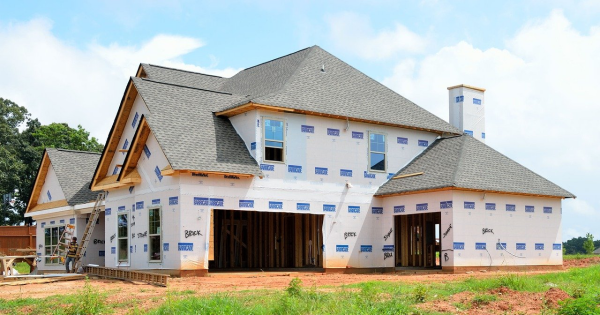
So you’ve decided to build your own home. There are a lot of benefits to building a home from scratch as opposed to buying one that already exists. You can create a home that caters to your own needs, rather than those of the previous homeowners. For that matter, you can install certain custom features, like smart home technology and handicap-accessible features. Building your own home allows you to get ahead of the trends and create a space that is ideal for your family.
But it’s not enough to decide on a certain home design and move forward. Those building new houses also need to consider where they’re building. After all, before getting in touch with local home builders you should at least have a plot of land in mind, and ideally, invest in one before then. With 44% of all new homebuyers beginning their search for properties online, there’s certainly nothing wrong with hitting the internet as you search for a plot of land. But you should have a few things in mind as you do so.
1. Assess Whether or Not the Land Is Buildable
How buildable is the land that you’re considering? This may seem to be an obvious factor, but lots of new homebuyers get so excited when considering new houses that they don’t consider how buildable the plots of land they’re considering really are. A plot of land may seem like a great deal as you begin to consider the costs of new construction homes, but is it perhaps too good to be true?
A plot of land may be advertised as buildable simply because it’s been deemed legal to build upon, but there is more to building than just legality. You’ll need to know about the soil quality in the area. Is the surrounding land close to the sea or a river, and if so is that area prone to flooding? If you do want to build a new home with a basement, will the land you’re considering accommodate that? You need to have any plot of land that you’re considering professionally assessed before you commit to it.
2. Location
It’s quite possible that the land that you’re considering is already a new subdivision, where lots of homes are being built. This does take a lot of stress out of determining whether or not a plot of land is buildable. But you’ll need to consider whether or not that subdivision is in a desirable area, and therefore worth taking a risk on. When a home is an established neighborhood, you can be sure that it’s worth the investment. But there is more ambiguity to consider with new subdivisions and plots of land in the country.
Look into the area’s school district as well as its closeness to businesses, restaurants, and other social hubs. The more accessible the area is, the more value it will likely have. Building on a plot of land, fortunately, will allow you to get into up and coming areas before property values rise out of your budget.
3. Utilities
If you decide to build within certain subdivisions, you likely won’t have to worry about whether or not water, electricity, gas, sewer, cable, and telephone service connections are available. But it’s something that you should have confirmed either way before you invest in a plot of land.
If there aren’t connections available, you can have them added with an additional fee. You’ll just need to get in touch with a service provider first. Usually, this is more of an issue within rural areas.
4. Consider Environmental Issues
Before considering whether or not to build new houses in an area, homebuyers should research environmental hazards. Contaminated water or soil can be major issues during and after the building process, as can chemical or fuel storage tanks.
Fortunately, this research can be done through a phase one environmental study. For a fee, buyers can have the study conducted and be sure about the environmental soundness of the land in which they’re considering investing.
Building new houses is exciting, but it also requires a lot of research. Before investing in a plot of land, do your research. The land is just as important as the home.